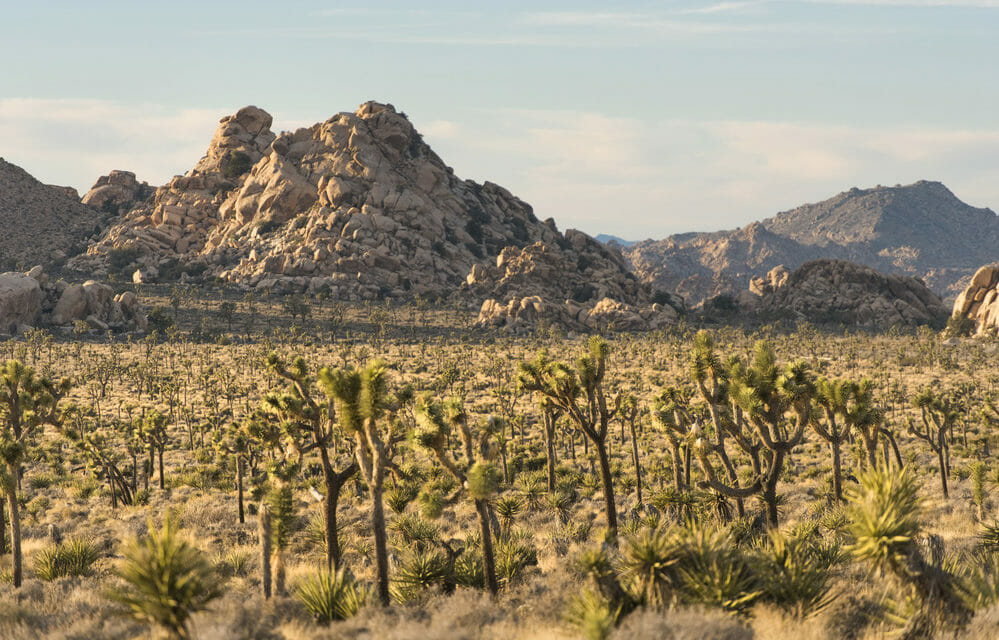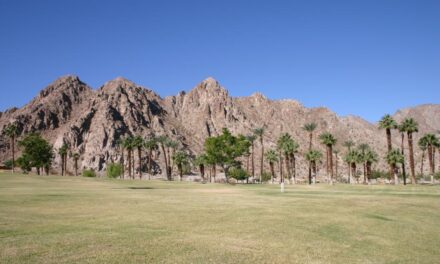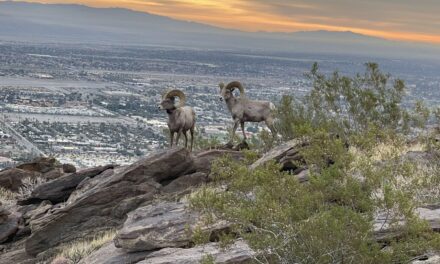Stark, rock-strewn mountains rise all across California’s deserts thanks to the Pacific and North American tectonic plates colliding. With the heat turned up in the Coachella Valley floor, a good place to explore those peaks is at Joshua Tree National Park.
Located in the high desert east of the Coachella Valley, the Easter holidays mark a great time to visit the national park with the added bonus of wildflower blooms.
A 2-mile (4-miles round trip) segment of the Lost Horse Mine Trail passes some of those wildflowers while heading to the base of one desert summit – Lost Horse Mountain, which rises nearly a mile above sea level to 5,278 feet.
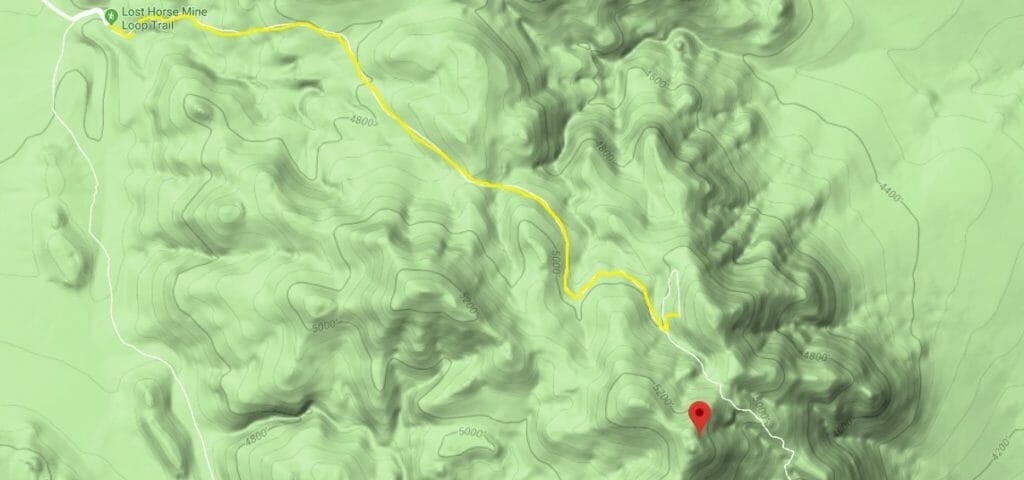
Lost Horse Mine Trail map
To reach the trailhead, from Interstate 10 in the Coachella Valley take Calif. Hwy. 62 north through Morongo Valley. In Joshua Tree, turn right/south onto Park Boulevard (aka Quail Springs Road) into the national park. Just before Cap Rock, go right/south onto Keys View Road. Next, turn left/southeast onto Lost Mine Road, which quickly becomes gravel. A parking lot is at the road’s end, and the trail heads out from the lot’s southeast corner.
The route immediately enters a low-lying arm of the Little San Bernardino Mountains. A stout range, the Little San Bernardinos run about 40 miles along the Coachella Valley’s northeast side. The mountains mark the transition zone between the valley’s Colorado Desert environment and the Mojave Desert that sits above the coastal basin.
About 2 million years ago, the Little San Bernardinos began to rise, thanks to action along the San Andreas Fault where the North American and Pacific tectonic plates slip against one another. Just about every time there’s an earthquake in the Coachella Valley, the Little San Bernadinos grow a bit taller.
The rocks making up the mountains are mainly granitic and metamorphic and are hundreds of millions of years old. Granitic rock forms when magma solidifies underground; the coarse rock usually contains a large amount of quartz. Metamorphic rock also forms underground but when heat and pressure alters the chemical composition of other rocks, such as sandstone or shale.
Joshua trees and yucca line much of the boulder-strewn trailsides. You’ll gain about 500 feet of elevation on a gradual uphill grade.
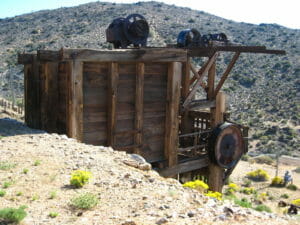 About 1.8 miles in, a spur off the trail heads to Lost Horse Mine. The rusted remnants of its stamp mill mark the mine’s entry. A chain-linked fence prevents hikers from walking amid the mill and entering the mine, however.
About 1.8 miles in, a spur off the trail heads to Lost Horse Mine. The rusted remnants of its stamp mill mark the mine’s entry. A chain-linked fence prevents hikers from walking amid the mill and entering the mine, however.
For two decades beginning in 1884, miners pulled gold and silver from the mountainside here. About 16,000 ounces of silver and 10,000 ounces of gold were extracted. That may not seem like much, but in today’s dollars it’s nearly $5 million of gold.
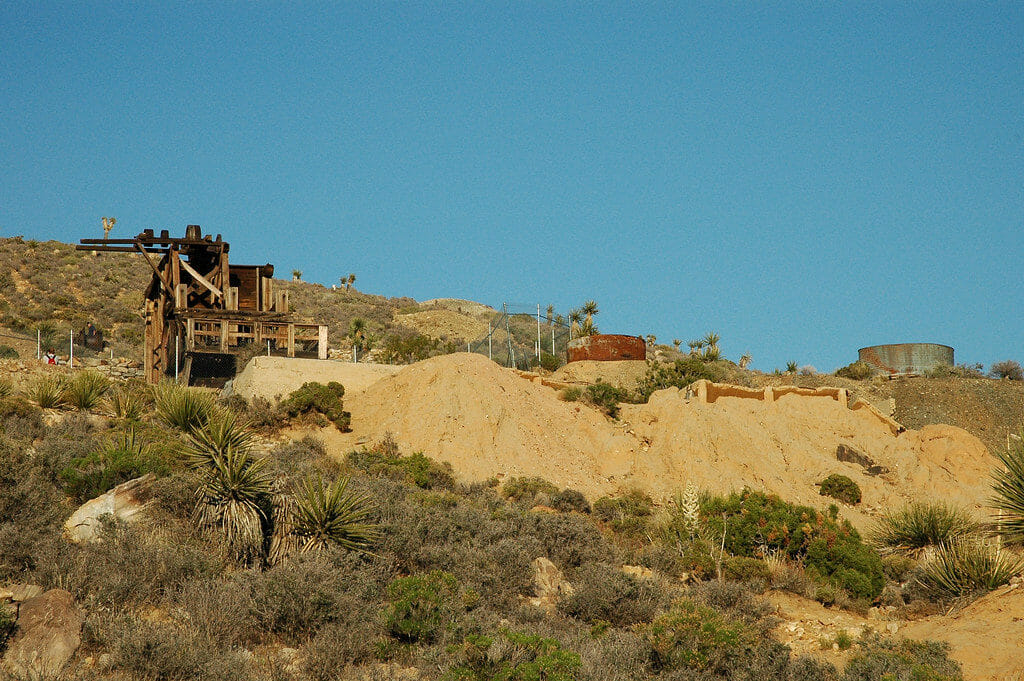
During the end of the 1800s, the Lost Horse Mine pulled nearly $5 million of gold out of the ground.
The trail and mine got its name because one of the mine’s original owners had lost his horse while camping in the area. That’s when he met a man who told him about finding the gold and sold him his claim to it for $1000.
The Lost Horse Mine Trail actually is a loop through the mountains and from the spur heads south. Rather than take that long circle route, which adds 2.9 miles to your hike, instead retrace your steps to the parking lot.
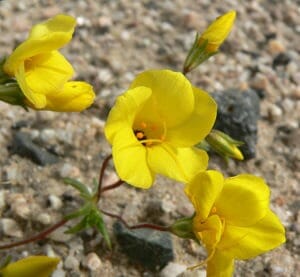 To see the park’s current gold, as walking back be sure to look west from any of the trail’s high points. Around mid-April, a field of yellow flowers usually appears on the plain below, known as Lost Horse Valley.
To see the park’s current gold, as walking back be sure to look west from any of the trail’s high points. Around mid-April, a field of yellow flowers usually appears on the plain below, known as Lost Horse Valley.
Three desert wildflowers make up the brilliant yellow carpet. Golden linanthus is a type of phlox with five sun-colored petals and an orange center. Wallace’s woolly daisy is equally bright and often covered in white, cotton-like filaments. Bristly fiddlenecks is not quite as vivid of a yellow but grows taller than the other two wildflowers.
Another sight this time of year is the giant white blossoms of the Joshua tree. Each bloom is about the size of a pineapple and grows off the Joshua tree’s arms. Between a half-dozen to 18 blossoms can be found on various Joshua trees.
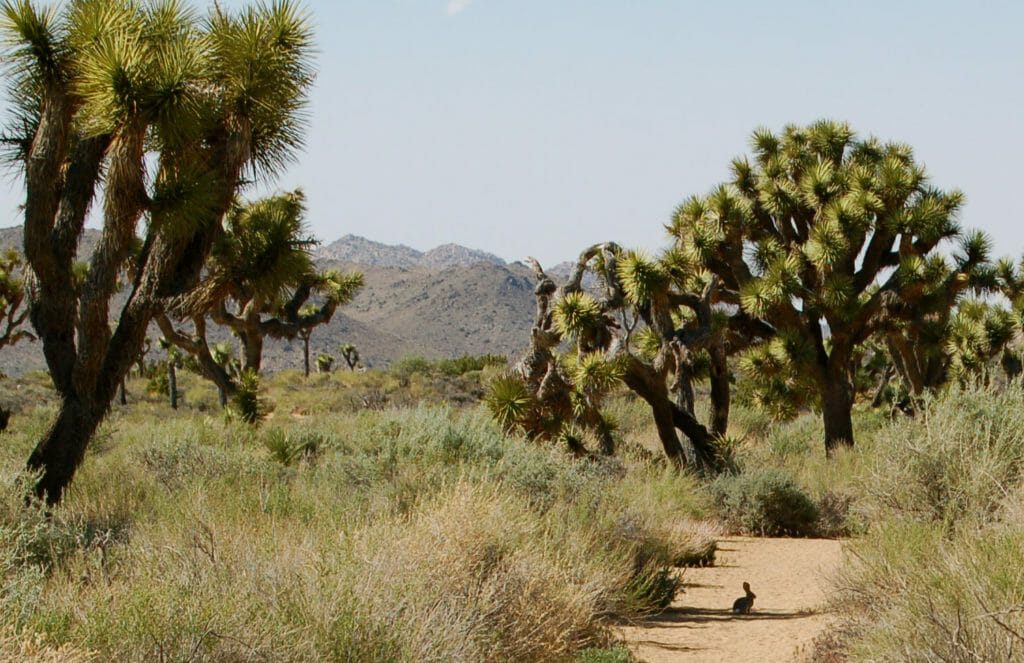
Keep an eye out for the Easter bunny – or a at least a black-tailed jackrabbit pretneding to be one – on the Lost Horse Mine Trail.
The entire route is exposed to the sun, so be sure to don sunscreen, sunglasses and a hat as well as bring plenty of water. Should you see a great flower bloom on the drive to or from the trailhead, don’t walk into the flower bed, as doing so damages the fragile desert environment while increasing your chances of encountering a rattlesnake, which like to hide amid the blossoms.
Image Sources
- Lost Horse Mine Trail Map: Rob Bignell
- Horse Mine Stamp Mill: Rob Bignell
- Horse Mine: Rob Bignell
- Golden Linanthus: Rob Bignell
- Auto Draft: Rob Bignell
- Lost Horse Mine Trail: Rob Bignell

